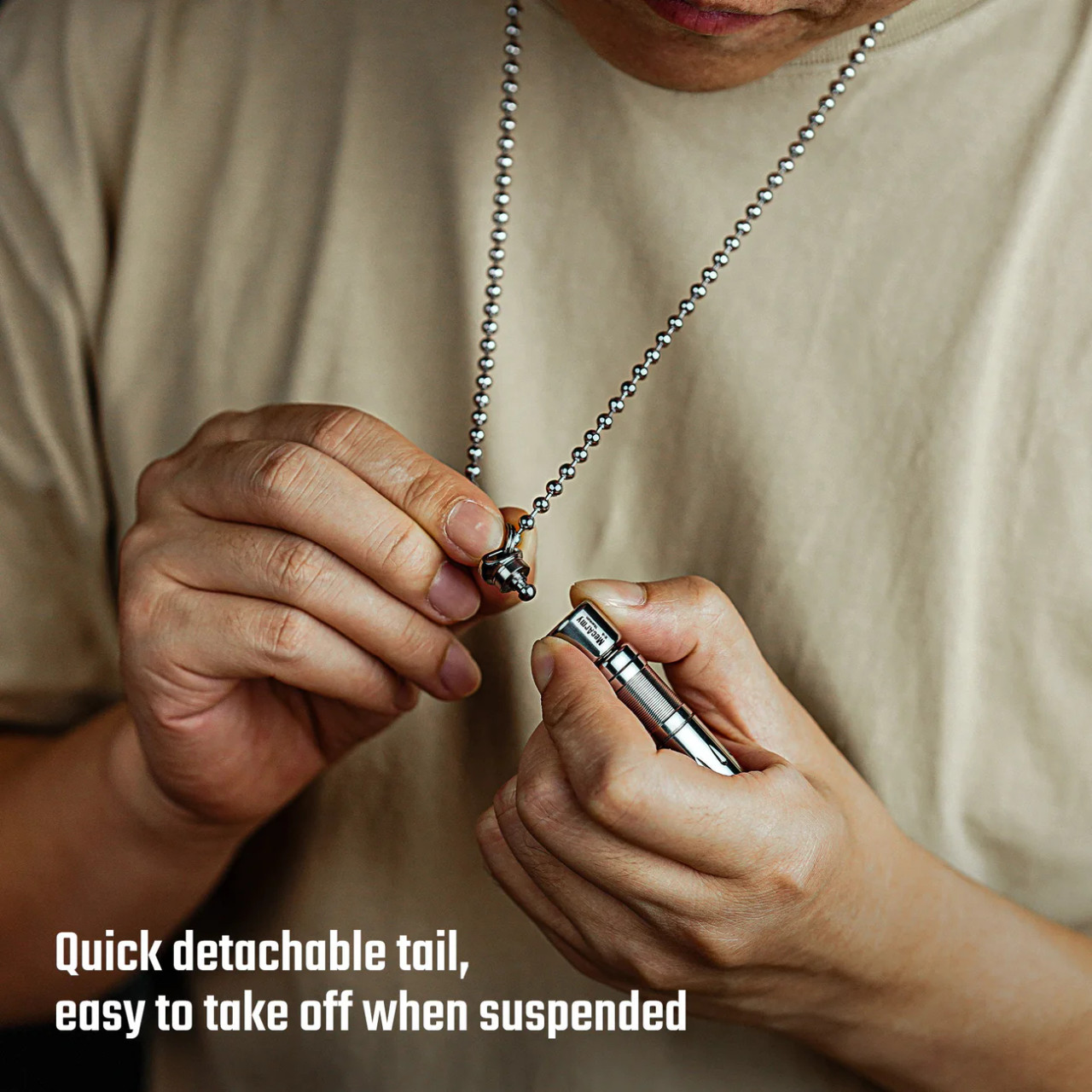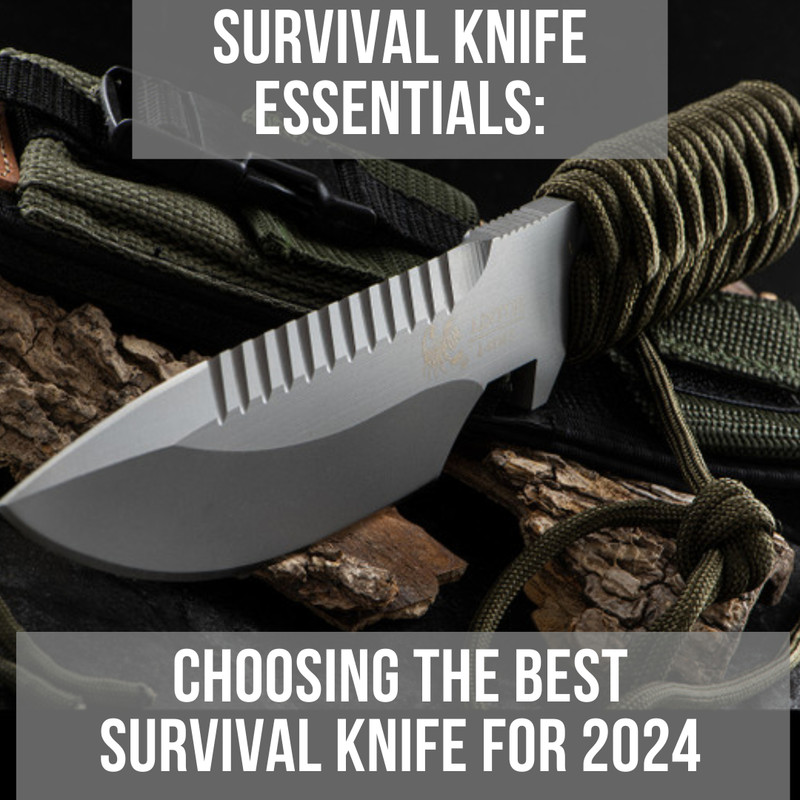What Does EDC Mean? Essential Items for Your Daily Kit
Posted by Heinnie Haynes on 28th Feb 2025
EDC stands for Everyday Carry. It's a concept that's gained popularity in recent years. People who follow EDC select items they always keep with them.
These items are often small and useful. The goal of EDC is to be ready for daily tasks and minor emergencies.
EDC choices vary based on a person’s lifestyle and needs. A builder’s EDC might include a tape measure, an office worker might carry a pen and notebook and a survivalist may opt for an EDC knife or rechargeable torch. EDC items are meant to make life easier and solve common problems.
Origins of the Term
The term EDC gained popularity in online forums and social media in the early 2000s. It started in survival and outdoor communities, where people shared photos of the gear they carried daily.
EDC discussions became common on websites and blogs. People compared their carry items and gave advice. The term grew to include a wide range of objects. These could be anything from pocket knives to mobile phones.
Everyday Carry Philosophy

The EDC philosophy focuses on being prepared for daily life. It's about choosing useful and meaningful items. People aim to achieve a balance between function and personal style.
EDC fans often put thought into each item they carry. They consider factors like:
-
Weight and size
-
Durability
-
Versatility
-
Personal needs
-
Aesthetic appeal
Some people view EDC as a form of self-expression, while others see it as a practical approach to daily challenges.
Many enthusiasts are equally drawn to the visual and tactile qualities of their gear, seeking out items crafted from beautiful hi-tech materials with distinctive designs and satisfying physical interactions. The precision machining of a titanium flashlight, the patina development on a leather wallet or the smooth action of a well-crafted pocket knife become part of the allure.
An effective EDC setup includes essential items, useful gadgets and personal touches. These elements work together to help people handle everyday tasks and unexpected situations while reflecting their individual style and appreciation for quality design.
Common EDC items

Multi-tools are popular for their versatility. They combine pliers, knives, screwdrivers, and other tools in one compact package. Pocket knives are also common for cutting tasks.
Torches are handy for low-light situations. Many people opt for small, powerful LED models. Portable chargers keep mobile devices powered on the go.
Some other gadgets include:
-
Compact first aid kit
Personalisation and Lifestyle
EDC setups vary based on individual needs and preferences. Someone's job, hobbies, and daily routines shape their kit. A tradesperson might carry specialised tools. An artist could include a small sketchbook and pencils.
Climate and location also affect EDC choices. People in rainy areas might add a compact umbrella. Those in sunny regions often carry sunglasses and sunscreen.
The best EDC kits balance usefulness with personal comfort. They reflect the carrier's lifestyle and priorities.
EDC Through History
The concept of EDC has changed over time, but the penknife has been present in one’s choice of EDC since humans first began making and carrying tools.
It started as basic tools - often knives, flint and small tools - which hunters and gatherers needed for survival.
As society changed, so did EDC items. Coins became common when money was invented. Keys appeared as locks became widespread. Pocket watches were popular before wristwatches.
In the 1800s and 1900s, EDC shifted again. More people moved to cities. They needed different items for urban life. Wallets, pens, and handkerchiefs became standard.
Today's EDC reflects our tech-focused world. Smartphones are now a key part of most people's daily gear, and many carry portable chargers, too.
Multi-tools have replaced some single-use items. This saves space and weight.
New materials have improved EDC items. Titanium makes tools lighter and stronger. LED lights last longer than old torches.
Practical Considerations
Carrying items every day requires careful thought about legality, safety, and ease of transport. These factors shape what people choose to include in their EDC.
Laws vary widely on what items can be carried in public. It's crucial to check UK laws before adding anything to your EDC.
In the UK, for example, carrying a locking knife or fixed blade without a good reason is illegal.
Airlines have strict rules about what can go in hand luggage. Metal objects, liquids, and sharp items often face restrictions. Travellers should always check airline guidelines before packing their EDC items for a flight.
Safety and Practicality
EDC items should be safe to carry and use. Sharp objects need proper storage to avoid injury. Items with batteries might pose fire risks if damaged. It's wise to choose sturdy, well-made products that can withstand daily use.
The size and weight of EDC items matter a lot. Bulky objects can be uncomfortable to carry all day. Heavy items might strain pockets or bags. Many people prefer slim wallets and compact tools to save space.
Some EDC setups use organisers or special pouches to keep items tidy and easy to access. This can help distribute weight and prevent damage to pockets.
Keychain tools offer a way to carry useful items without extra bulk.
Some people rotate their EDC based on daily needs to keep their load light and useful.
Building Your EDC
Creating an effective everyday carry kit takes some thought and planning. The items you choose should be useful, compact, and suited to your daily needs.
Start with the basics: a small torch for low-light situations, a multi-tool for minor repairs, and a pen and small notepad for jotting down ideas.
Think about your daily activities. Do you need reading glasses? What about a small first aid kit? A bottle of hand sanitiser might be useful.
Keep size and weight in mind. Your EDC should fit comfortably in your pockets or a small bag. Don't overload yourself with unnecessary items.
Quality matters. Choose durable products that can withstand daily use. It's better to invest in a few good items than to buy cheap ones that break quickly.
Maintenance and Upkeep
Regular checks are important. Make sure your EDC items are in good condition. Replace batteries in your torch when needed. Keep your multi-tool clean and oiled.
Organise your EDC for easy access. Use a key organiser to reduce bulk and noise. A slim wallet or card holder can help you carry only essential cards.
Update your kit as your needs change. Remove items you don't use often. Add new ones that prove useful in your daily life.
Clean your EDC items regularly. Wipe down your phone and keys. Empty your wallet of receipts and unnecessary bits.
Consider rotating some items. This can help extend their lifespan and ensure you always have fresh supplies.
The Impact of EDC on Everyday Life
EDC items have changed how people prepare for their daily activities. Many now carry small, useful tools that can help in various situations. This shift has made people more self-reliant and ready to tackle unexpected problems.
Common EDC items include pocket knives, torches, and multi-tools. These objects allow individuals to handle minor repairs or emergencies without seeking help, which can result in people feeling more confident and capable in their day-to-day lives.
EDC practices have made people more aware of their surroundings and potential needs. This heightened awareness can lead to better preparedness for various situations, from power outages to minor accidents.
Now you’re well informed about EDC and can make educated decisions about what would work best in your own EDC. Browse our range here to find everything you need, and for more information, contact a member of our friendly team on 033 0300 0400.







